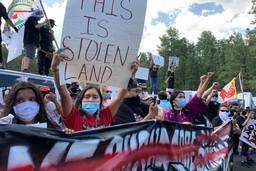
The United States District Court for Utah has issued a powerfully worded order in favor of restoring Willie Grayeyes’s right to vote in San Juan County, as well as his right to run for a county commission seat there. Calling county officials “double-tongued,” “thimble-riggers,” and more, the court held that they had stripped fundamental civil rights — voting and candidacy — from Grayeyes, a Navajo Nation enrolled member and a long-time resident, voter, local official, and cattle rancher in the county.
It had done so with illegal means, according to the order. These included backdated files, unsigned “reports,” unidentified hearsay sources, racial bias, out and out lies, and multiple additional actions that flouted the law in an exceptionally flagrant fashion. This was consistent with decades of denying Natives meaningful access to the ballot box, said the Utah District Court.
Grayeyes’s candidacy followed a federal redistricting order that gave Navajo residents their first chance since statehood “to achieve actual representation of Native American interests,” said the court. Among its numerous damning statements, it held that the county had set about creating evidence to support an opposing, non-Navajo, candidate and had done so to “silence” Grayeyes.
The court didn’t stop there. At length, it pointed out that “misuse of official position for personal or political advantage” is against Utah state law; it described certain opposing candidates as “conspiring” with county officials in this effort. The process was “so profoundly egregious,” said the court, that “no explanation other than a wrongful use of public office for partisan ends — to keep Grayeyes off the November ballot — is possible.” A call for prosecution of the miscreants was made in the Salt Lake City Tribune.
James Francom of the San Juan County election office confirmed that the county would comply with the order and place Grayeyes on the November ballot. He added that the county had no comment whatsoever on the case, the order, or the description of lawbreaking by the county.
Stephanie Woodard is an award-winning human-rights reporter and author of American Apartheid: The Native American Struggle for Self-Determination and Inclusion.








